Meet the Owners Spending Big on Their Pets—Even After Their Deaths
Pet memorialisation is having a post pandemic bump, as owners turn to bone preservation, life-like taxidermy and personalised urns to ease their grief
Pet memorialisation is having a post pandemic bump, as owners turn to bone preservation, life-like taxidermy and personalised urns to ease their grief
In San Jose, Calif., a preserved Chihuahua skeleton stands on a bed of fur atop an antique library card catalog. A photo of the dog, Shirley, peers down on the living-room display.
Mari Moore, a 45-year-old paralegal, paid around $6,500 to preserve her dog’s bones, a process called bone articulation, after the rescue dog, who was at least 10 years old, died in 2020.
With a new appreciation for the brevity of life, she and her husband, Kirk Moore, 45, started therapy to improve their relationship after Shirley died.
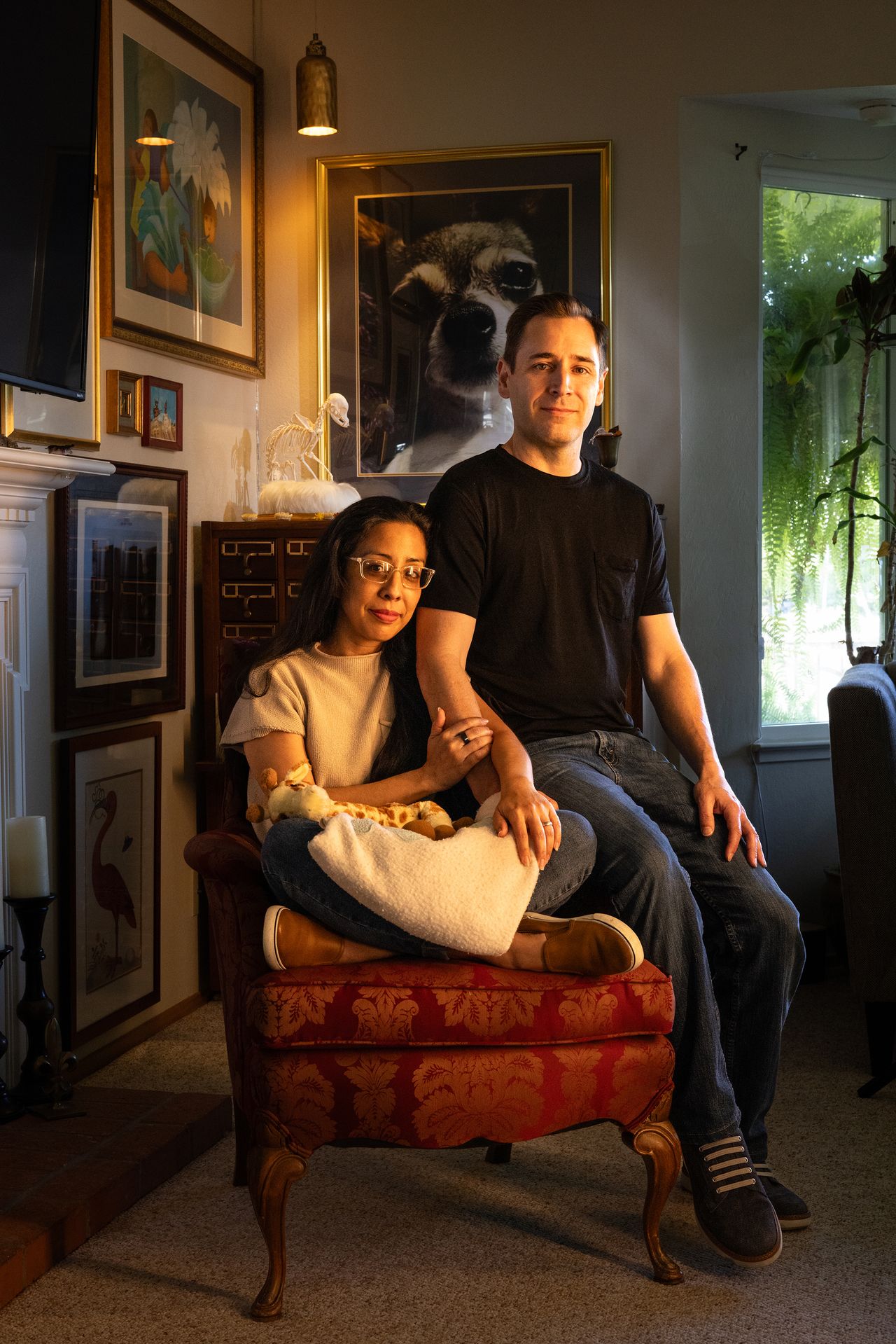
“When Shirley passed, our whole lives changed. We really realised that we want to appreciate each other,” she said. Now, they visit the shrine almost daily, especially during fights and difficult days. “It reminds me of real, pure, unconditional love, and it makes me want to be better.”
Mourning owners are memorialising their beloved cats and dogs at a rate not seen in over a century, when Victorian-era pet owners frequently taxidermied deceased companions, said the Moores’ taxidermist, Lauren Kane of Precious Creature Taxidermy in Redlands, Calif.
Lifelike taxidermy and bone articulation can cost thousands of dollars. But urns, some made of bronze or inlaid with ornate mother-of-pearl designs, are a more common and accessible choice for people who want to honour their pets and integrate a memorial into the design of their home, said Tim Murphy, executive director and chief executive of the Casket & Funeral Supply Association of America. The trade organisation supports professionals in funeral services for humans and, increasingly, for pets, he said.
In 2023, about 33% of funeral homes offered pet-care services, up from 26% in 2021, according to the National Funeral Directors Association, a professional organisation for funeral-services professionals in Brookfield, Wis.
Demand has heightened since the pandemic, when bonds grew stronger as people spent more time at home with their pets, said Donna Shugart-Bethune, executive director of the International Association of Pet Cemeteries and Crematories.
While pet urns usually cost $50 to several hundred dollars, customisation can push the expense into the thousands, said Murphy. Sentimental pet owners frequently commission artists to make custom sculptures of bronze, papier-mâché, wood or pottery as vessels for pet ashes, said Coleen Ellis, the executive director of the International Association for Animal Hospice and Palliative Care.
“There is not too much of a limit on what people are willing to spend on their pets. I actually find that people are willing to spend more money on their pets than on their human loved ones,” said Nikki Nordeen of Terrybear, a St. Paul, Minn.-based supplier of memorial items to the funeral industry and pet-loss professionals.
While pet urns are usually smaller and less expensive than those designed for humans, Nordeen said some people are choosing personalised, high-end urns that rival or even exceed the cost of traditional human urns, she said. Without customisation, Terrybear’s pet urns retail for about $50 to $400 compared with an average $120 to $800 for traditional urns, said Nordeen.
In Manhattan, Ill., a $250 square wooden urn is disguised as a shadow box, showcasing three photos of a cocker spaniel mix named Bucket, her collar and a tag that identified her as blind.
Kate Becker, a 36-year-old critical care nurse practitioner, and her husband, veterinarian Scott Becker, adopted two dogs—Bucket and Mr. Pickles—in 2014. Four years later, she said they built a house with a light-filled guest bedroom where Scott played guitar to decompress after difficult days.
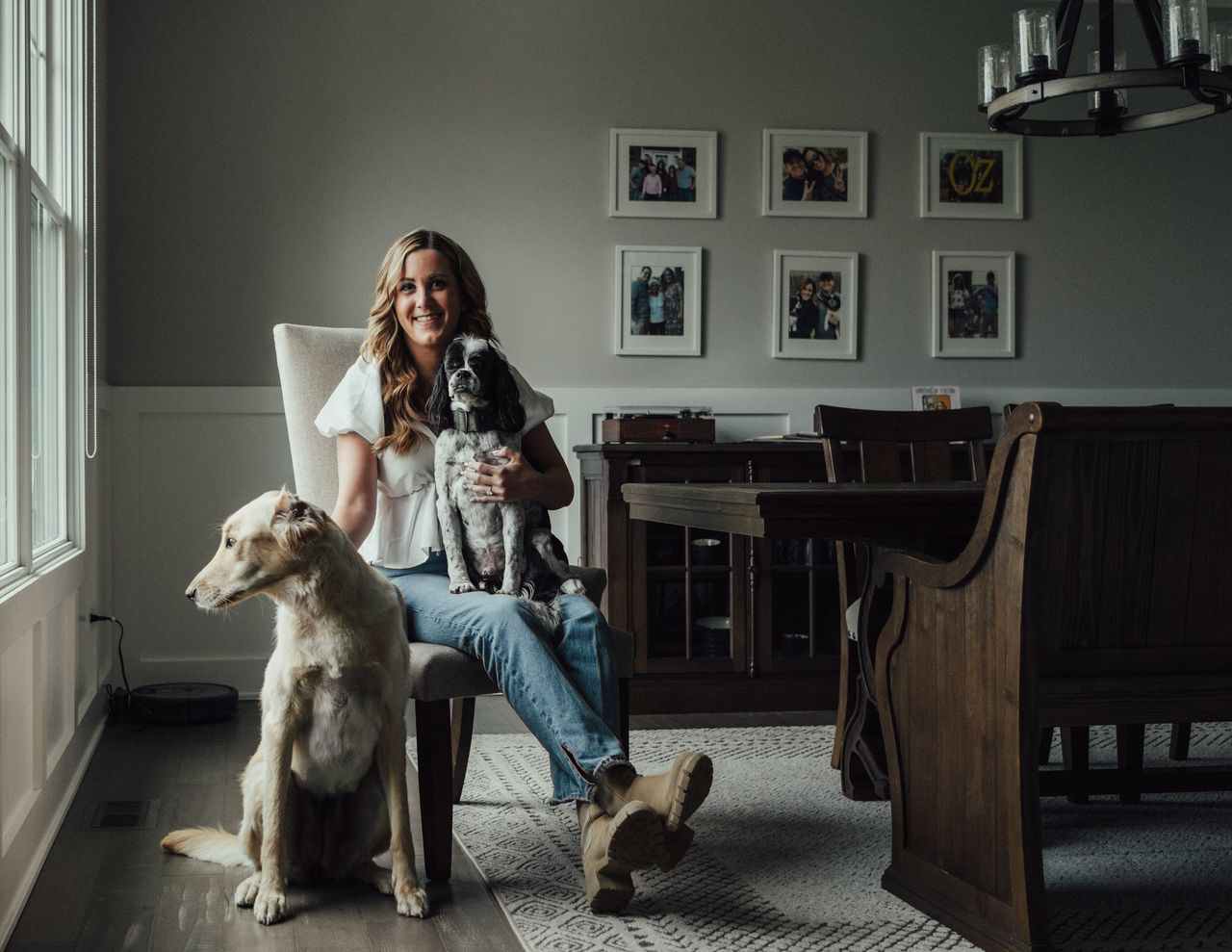
But Kate’s life changed when her husband died of cardiac arrest at age 40 in 2020, and Bucket went into kidney failure and had to be put down a year later.
“Scott and I did not have any children, so my dogs 100% got me through,” she said. “Losing Bucket—that was really hard, especially so soon after Scott passed.”
Kate placed Scott’s urn, a box with a sea-like glass exterior, with Bucket’s urn on a dresser in the guest bedroom, with candles and her late husband’s ball cap.
“I’m grateful that Bucket is still part of my home,” said Kate, who said she limits the special items displayed to maintain an uplifting space for meditations, with Mr. Pickles by her side.
Often, mourning pet owners drape a collar over the urn’s neck and arrange the pet’s favourite toys around it. Designers recommend creating photo walls and using shadow boxes to display fur, whiskers, toys and collars. Plants can be placed near urns to represent the continuation of life in a home after a pet’s death, said interior designer Jeannelly Hartsfield of Ivyleaf Interior in Powder Springs, Ga., who has helped clients create memorial displays in their homes.
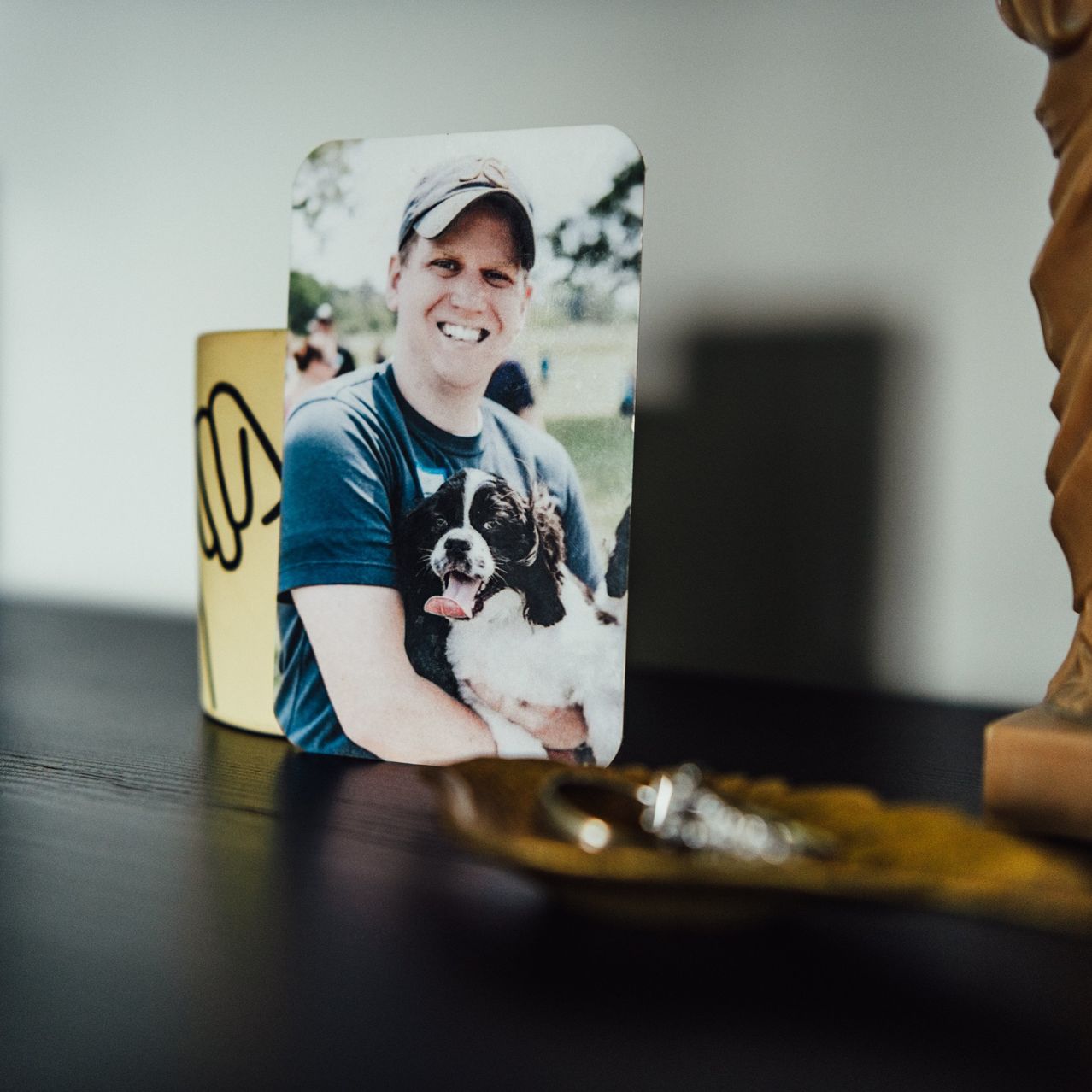
The cedar wood urn of Ruby, an Australian shepherd-labrador, sits on a table next to Lisa Daoust’s living room fireplace, surrounded by a favourite toy squirrel and dried flowers.
In the corner where Ruby liked to nap, Daoust, a 59-year-old retired teacher in Murietta, Calif., hung a roughly $270 photo designed by EverAfter. The Florida-based company says it shines light through crystals created with a pet’s ashes to generate unique images.
The urn, with a “Ruby-Rue” nickname nameplate by Furever Loved in Lake Elsinore, Calif., was included with the cremation, which cost about $200, she said. Depending on a pet’s size and services included, owners usually pay several hundred dollars for cremation, a fraction of the cost of human cremation.
Daoust rescued Ruby in 2002, two years before she married her husband, retired Department of Defense firefighter Jason Daoust, 51. Ruby saw Daoust through the death of her brother in January 2022 before dying in March 2022, several months before Daoust’s mother-in-law passed away. The combined grief was devastating. But finding ways to honour loved ones has helped her process her loss, she said, adding that she also has memorials for her mother-in-law and brother in her home.
“Our relationships with family and friends are so much deeper now. We don’t criticise, and we don’t judge so easily. Because in a snap, life could be gone,” said Daoust.
People frequently place pet urns in living rooms on shelves or fireplace mantels, where owners can process their pet’s passing by talking about their companion with visitors. Or, owners sometimes place them in the pet’s favourite place to spend time, whether that be in a garden or in a sun puddle in a home office, said Ellis.
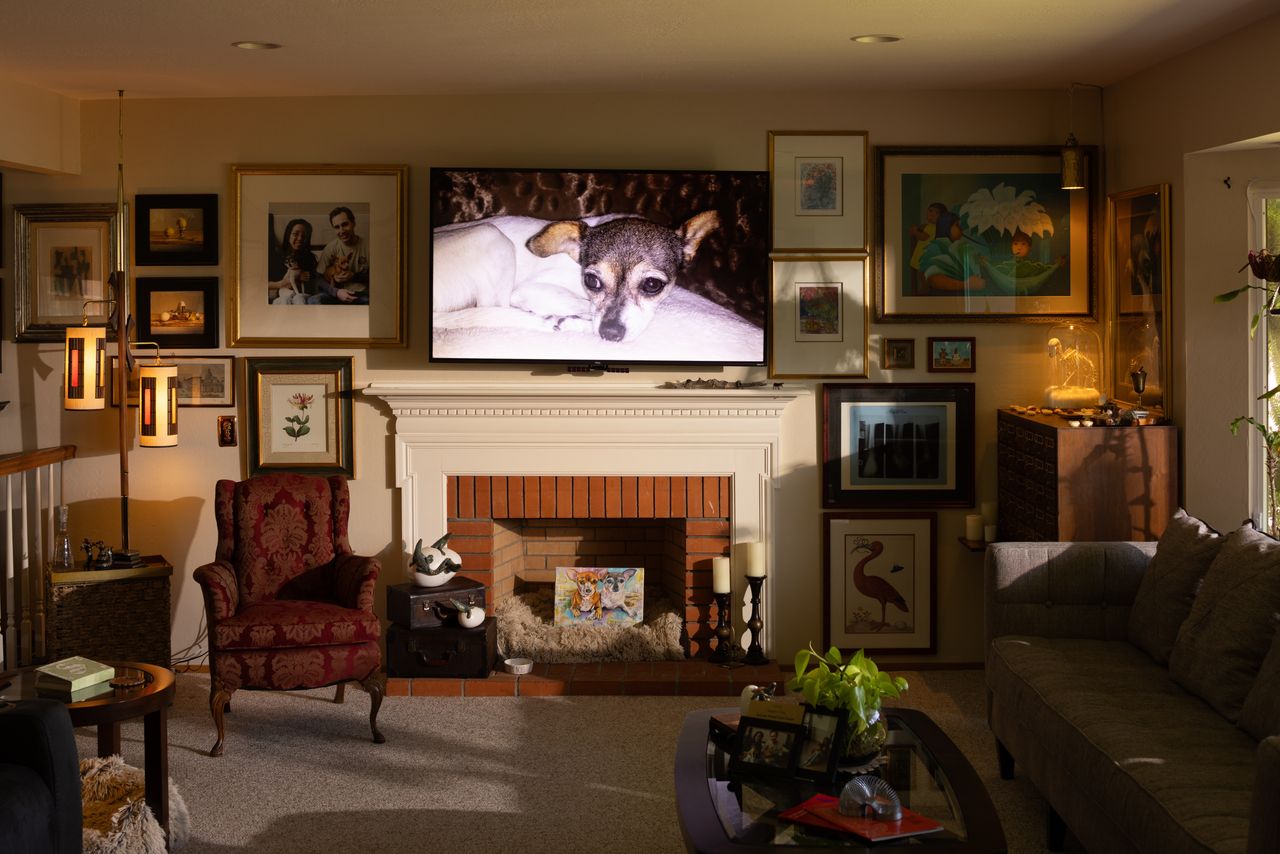
Though interior designers and Feng Shui practitioners generally advise that people keep bedrooms a place to focus on rest, some keep ashes in their bedrooms when their loss is fresh, said Laura Cerrano, founder of Feng Shui Manhattan, a New York City-based consulting firm.
Vivianne Villanueva Dhupa, the former owner of a pet crematory and a pet hospice facility in the San Diego area, says she encourages people to place a memento where they would expect to see their pet.
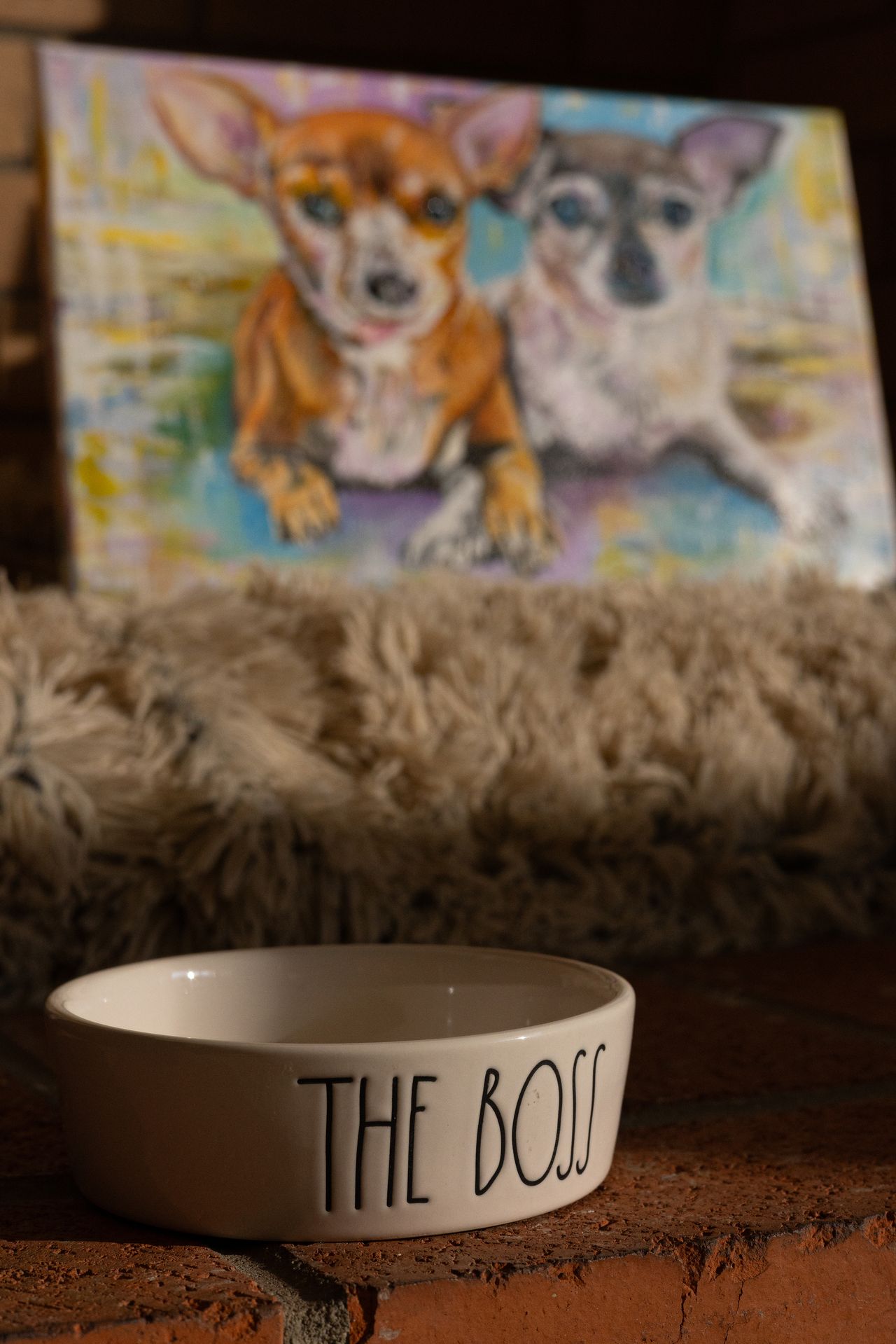
“It helps with the grieving to have something to focus on, because it leaves such a void, physically and emotionally,” she said.
Dhupa has three urns in her own living room. The shelves hold a roughly $125 black ceramic urn for her black cat who died several years ago and a $395 poodle-shaped ceramic urn figurine for a poodle-mix dog who died in September. On a coffee table is a $260 white heart-shaped urn with a decorative gold heart for a Brussels griffon who died in December. She also has several stones etched with her pets’ names in the garden where her dogs liked to play, she said.
One highly customised urn sits on top of a piano in a Houston living room. The ceramic, 3D-printed sculpture of a dog in a claw-footed tub peers up with timid eyes amid family photos and snapshots of the collie named Darby.
Lauren Shafer, a 40-year-old marketing manager at Lone Star College-Houston North, and her husband James Shafer, a 48-year-old bass player, rescued Darby around 2010. Darby, a quiet dog that tended toward anxiety, jumped into the empty bathtub for safety whenever uncertainty came his way. When Darby died in 2015, they spent about $1,200 for the custom 3D-printed urn by Foreverence, a custom urn design and manufacturing business in the Minneapolis area.
“Splurging on a custom-designed urn is, I’m sure, not something that everybody can do, but it sure helped me to get through it a little bit easier,” said Lauren.
Urn makers add pets’ names, dates, nicknames, poems and other sentiments, which usually costs about $25 depending on the design, said Chris Christian, co-owner of Christian-Sells Funeral Home in Rogersville, Tenn. Unique custom artwork, such as pet-shaped sculptures created by hand or 3D-printed, can cost several thousand dollars.
“People want an urn or memorial item that is representative of how they viewed their pet,” said Nordeen. For her two fluffy, white Samoyeds, she chose urns with a white shimmery finish and paw prints around the sides. It’s a design that typically costs around $180 apiece, plus an additional $120 to be etched with their names, nicknames and the years they were born and died, she said.
For Mari Moore, the process is beginning all over again: In January 2024, her other Chihuahua, Laverne, died. But Mari said that this time she is hopeful about her future as an “empty-nester” as she takes on new challenges and carves out new parts of her identity beyond being a “pet mom.” She celebrated Laverne’s life with about 100 friends by hosting a fundraiser with taco and churro trucks for the City of San José Animal Care & Services centre.
The skeleton tribute seemed an appropriate way to remember Shirley because the rescue dog with numerous health issues lost much of her hair by the end of her life, said Mari. But Laverne will be fully taxidermied, positioned as if she is sleeping on a bed. The process will take about two years and will cost over $10,000, but Mari said that for her, it’s worth it to honour her pets.
“Everybody who comes over says, ‘Wow. This is beautiful,’” she said. “I really feel like we did a good job honouring them.”
 Copyright 2020, Dow Jones & Company, Inc. All Rights Reserved Worldwide. LEARN MORE
Copyright 2020, Dow Jones & Company, Inc. All Rights Reserved Worldwide. LEARN MORE
What a quarter-million dollars gets you in the western capital.
Alexandre de Betak and his wife are focusing on their most personal project yet.
As Paris makes its final preparations for the Olympic games, its residents are busy with their own—packing their suitcases, confirming their reservations, and getting out of town.
Worried about the hordes of crowds and overall chaos the Olympics could bring, Parisians are fleeing the city in droves and inundating resort cities around the country. Hotels and holiday rentals in some of France’s most popular vacation destinations—from the French Riviera in the south to the beaches of Normandy in the north—say they are expecting massive crowds this year in advance of the Olympics. The games will run from July 26-Aug. 1.
“It’s already a major holiday season for us, and beyond that, we have the Olympics,” says Stéphane Personeni, general manager of the Lily of the Valley hotel in Saint Tropez. “People began booking early this year.”
Personeni’s hotel typically has no issues filling its rooms each summer—by May of each year, the luxury hotel typically finds itself completely booked out for the months of July and August. But this year, the 53-room hotel began filling up for summer reservations in February.
“We told our regular guests that everything—hotels, apartments, villas—are going to be hard to find this summer,” Personeni says. His neighbours around Saint Tropez say they’re similarly booked up.
As of March, the online marketplace Gens de Confiance (“Trusted People”), saw a 50% increase in reservations from Parisians seeking vacation rentals outside the capital during the Olympics.
Already, August is a popular vacation time for the French. With a minimum of five weeks of vacation mandated by law, many decide to take the entire month off, renting out villas in beachside destinations for longer periods.
But beyond the typical August travel, the Olympics are having a real impact, says Bertille Marchal, a spokesperson for Gens de Confiance.
“We’ve seen nearly three times more reservations for the dates of the Olympics than the following two weeks,” Marchal says. “The increase is definitely linked to the Olympic Games.”

According to the site, the most sought-out vacation destinations are Morbihan and Loire-Atlantique, a seaside region in the northwest; le Var, a coastal area within the southeast of France along the Côte d’Azur; and the island of Corsica in the Mediterranean.
Meanwhile, the Olympics haven’t necessarily been a boon to foreign tourism in the country. Many tourists who might have otherwise come to France are avoiding it this year in favour of other European capitals. In Paris, demand for stays at high-end hotels has collapsed, with bookings down 50% in July compared to last year, according to UMIH Prestige, which represents hotels charging at least €800 ($865) a night for rooms.
Earlier this year, high-end restaurants and concierges said the Olympics might even be an opportunity to score a hard-get-seat at the city’s fine dining.
In the Occitanie region in southwest France, the overall number of reservations this summer hasn’t changed much from last year, says Vincent Gare, president of the regional tourism committee there.
“But looking further at the numbers, we do see an increase in the clientele coming from the Paris region,” Gare told Le Figaro, noting that the increase in reservations has fallen directly on the dates of the Olympic games.
Michel Barré, a retiree living in Paris’s Le Marais neighbourhood, is one of those opting for the beach rather than the opening ceremony. In January, he booked a stay in Normandy for two weeks.
“Even though it’s a major European capital, Paris is still a small city—it’s a massive effort to host all of these events,” Barré says. “The Olympics are going to be a mess.”
More than anything, he just wants some calm after an event-filled summer in Paris, which just before the Olympics experienced the drama of a snap election called by Macron.
“It’s been a hectic summer here,” he says.

Parisians—Barré included—feel that the city, by over-catering to its tourists, is driving out many residents.
Parts of the Seine—usually one of the most popular summertime hangout spots —have been closed off for weeks as the city installs bleachers and Olympics signage. In certain neighbourhoods, residents will need to scan a QR code with police to access their own apartments. And from the Olympics to Sept. 8, Paris is nearly doubling the price of transit tickets from €2.15 to €4 per ride.
The city’s clear willingness to capitalise on its tourists has motivated some residents to do the same. In March, the number of active Airbnb listings in Paris reached an all-time high as hosts rushed to list their apartments. Listings grew 40% from the same time last year, according to the company.
With their regular clients taking off, Parisian restaurants and merchants are complaining that business is down.
“Are there any Parisians left in Paris?” Alaine Fontaine, president of the restaurant industry association, told the radio station Franceinfo on Sunday. “For the last three weeks, there haven’t been any here.”
Still, for all the talk of those leaving, there are plenty who have decided to stick around.
Jay Swanson, an American expat and YouTuber, can’t imagine leaving during the Olympics—he secured his tickets to see ping pong and volleyball last year. He’s also less concerned about the crowds and road closures than others, having just put together a series of videos explaining how to navigate Paris during the games.
“It’s been 100 years since the Games came to Paris; when else will we get a chance to host the world like this?” Swanson says. “So many Parisians are leaving and tourism is down, so not only will it be quiet but the only people left will be here for a party.”